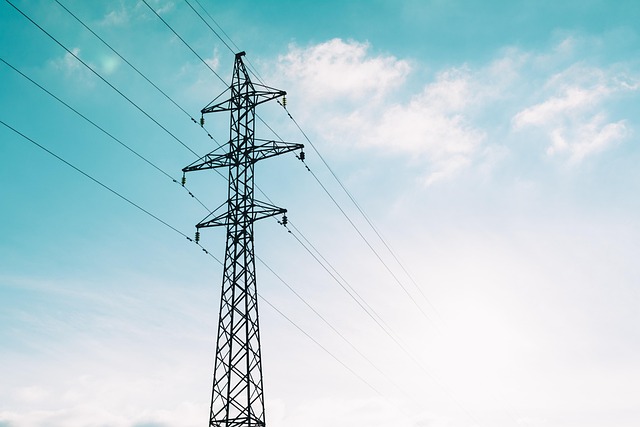Enterprise networking relies on a balanced approach to office data cabling using copper and fiber optic cables. Copper is cost-effective and suitable for smaller networks, while fiber offers superior bandwidth, minimal signal loss, and resistance to electromagnetic interference, making it ideal for high-speed data transfer and demanding applications like 5G and IoT. Integrating fiber backbone enhances network performance, future-proofs operations, and ensures optimal connectivity as digital demands grow. Regular maintenance and upgrades are crucial to keep these systems reliable and compatible with advanced technologies essential for business success.
In today’s digital era, a robust enterprise networking infrastructure is vital for any business. Understanding the intricacies of this network backbone, particularly the role of copper and fiber cabling, is essential for efficient data transfer. This article explores these components, delving into their advantages and practical considerations for office data cabling systems. From high-speed data transmission to implementation and maintenance, discover why fiber cabling is revolutionizing enterprise networks while copper remains a reliable staple.
Understanding Enterprise Networking Infrastructure
Enterprise networking infrastructure forms the backbone of modern business operations, enabling seamless communication and data exchange across various departments and locations. At the heart of this infrastructure lies a complex web of cabling systems, particularly office data cabling, which facilitates the flow of information in today’s digital landscape. Copper and fiber optic cables are two essential components driving the speed, reliability, and capacity of enterprise networks.
Understanding the interplay between these cabling types is crucial for organizations aiming to optimize their network performance. Copper cables, traditionally favored for their cost-effectiveness and ease of installation, have evolved to support higher speeds through enhanced categories like Cat6a and Cat7. On the other hand, fiber optic cables offer unparalleled bandwidth, low signal loss, and immunity to electromagnetic interference, making them ideal for long-distance transmissions and applications demanding high data rates, such as 5G networks and IoT implementations.
The Role of Copper and Fiber Backbone Cabling
In the realm of enterprise networking, the choice between copper and fiber backbone cabling is a pivotal decision that underpins the entire office data cabling infrastructure. Each option presents unique advantages tailored to specific needs, influencing the speed, reliability, and scalability of network connections within commercial spaces. Copper cabling, with its traditional dominance, offers cost-effectiveness and ease of installation, making it ideal for smaller networks or budget-constrained setups. However, fiber backbone cabling emerges as a game-changer in today’s data-intensive environment.
Fiber optics excel in handling high-speed data transfer rates, enabling lightning-fast network communications that are essential for modern enterprise operations. This technology is particularly indispensable in large, bustling office environments where numerous devices and users compete for bandwidth. By seamlessly integrating fiber backbone cabling into the office data cabling infrastructure, businesses can future-proof their networks, ensuring optimal performance as digital demands continue to grow.
Advantages of Fiber Over Copper for High-Speed Data Transfer
When it comes to high-speed data transfer within enterprise networks, fiber optic cables offer a significant advantage over traditional copper wiring. One of the key benefits is the remarkable speed and bandwidth capacity that fiber provides. Copper cabling, while reliable for standard network needs, struggles to keep up with the ever-increasing data demands of modern businesses. Fiber optics can transmit data at speeds ranging from gigabits per second (Gbps) to terabits per second (Tbps), making it ideal for high-performance computing, video conferencing, and large-scale data transfers that are becoming essential in today’s digital office environments.
Additionally, fiber cabling is less susceptible to signal degradation over long distances compared to copper. This means enterprise networks can extend their reach without compromising speed or performance, which is crucial for building extensive office data cabling infrastructures. The reduced signal loss also results in a more reliable network connection, ensuring minimal disruptions during data transmission, a critical factor for businesses relying on seamless communication and data exchange.
Implementing and Maintaining Office Data Cabling Systems
Implementing and maintaining robust office data cabling systems is paramount for any enterprise network. The backbone of modern communication, these systems facilitate high-speed data transfer, voice services, and video conferencing within and between offices. Careful planning and professional installation are essential to ensure optimal performance and future-proof connectivity. A well-designed cabling infrastructure considers factors like cable types (copper or fiber), routing paths, and port allocation to meet current and projected demands.
Regular maintenance is crucial to preserve the integrity of office data cabling. This includes routine checks for physical damage, loose connections, and corrosion. Proactive monitoring can help identify issues before they disrupt operations. Upgrading components like switches and connectors keeps the network aligned with emerging technologies and standards. By prioritizing these aspects, organizations ensure their data cabling systems remain reliable, secure, and capable of supporting advanced applications that drive business success.
In today’s digital era, robust enterprise networking infrastructure is paramount. Copper and fiber backbone cabling, with its superior speed and reliability, plays a crucial role in enhancing office data cabling systems. While copper has its merits, fiber offers significant advantages for high-speed data transfer, making it the preferred choice for future-proof networking solutions. Implementing and maintaining these systems requires careful planning and expert knowledge to ensure optimal performance and minimize disruptions. By investing in the right infrastructure, businesses can foster efficient operations, enhance productivity, and stay ahead in a constantly evolving digital landscape.
